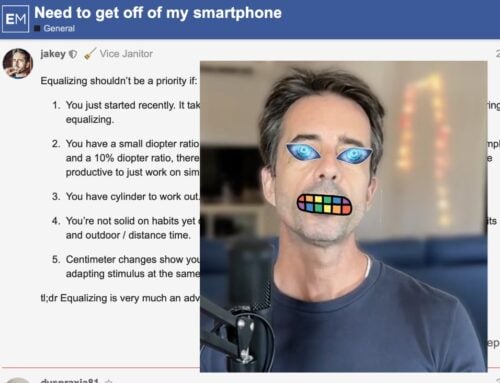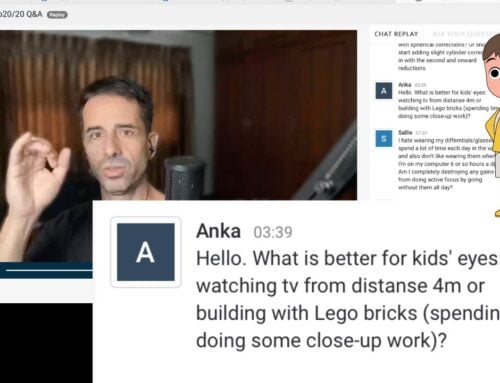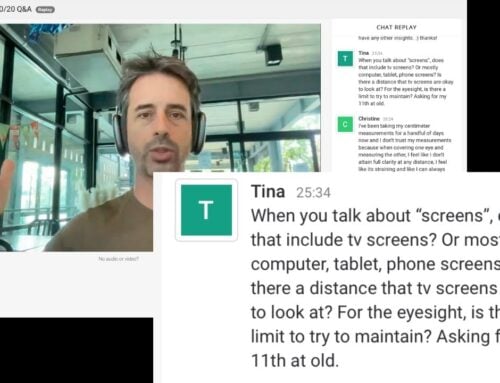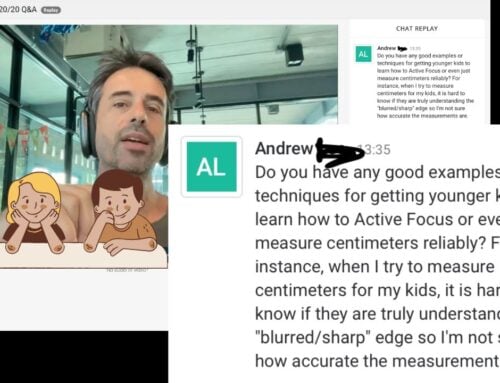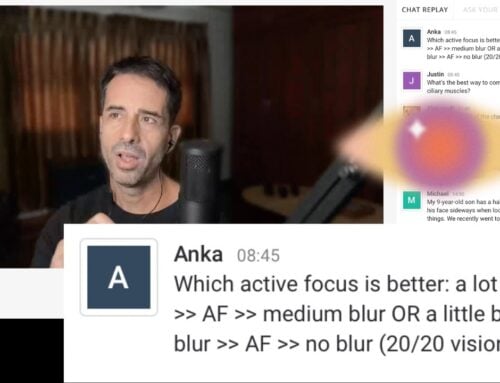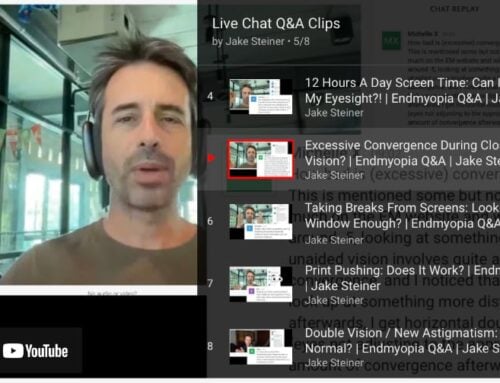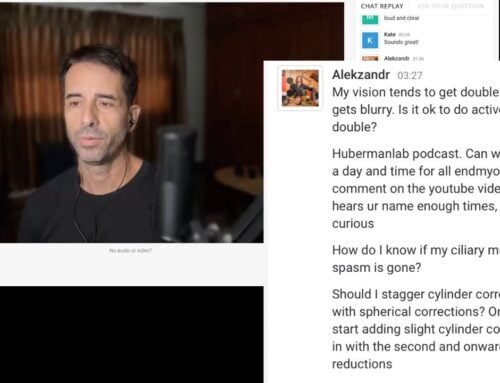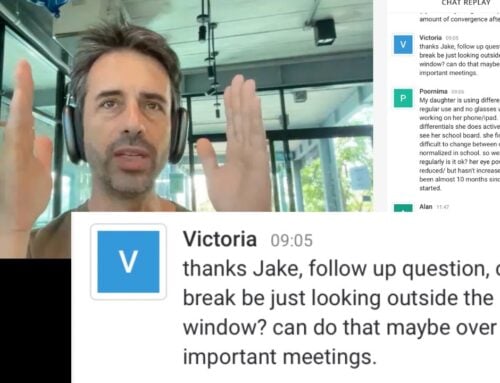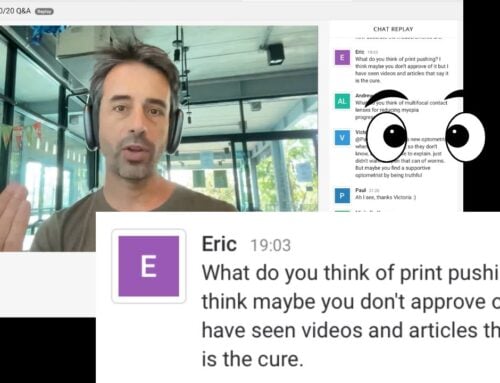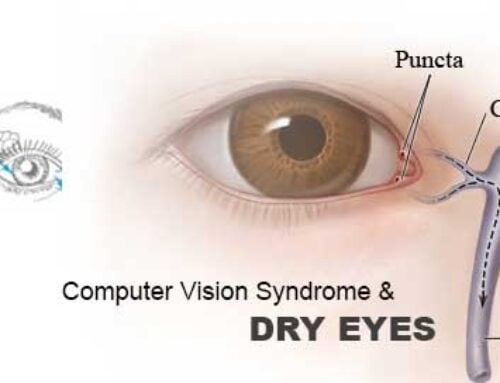Endmyopia is the perfect lazy person’s destination for highly effective vision improvement.
Perhaps ‘lazy’ is the wrong word. Endmyopia is the perfect destination for the individual seeking the most efficient way to make serious 20/20 gains. You might be the type who doesn’t want to have to eat unicorn tear eye vitamins and remember complex old timey exercise regimens, count and record daily screen time minutes, maintain daily motivation for all those things. You might be the type who just want usable and easy habit changes. Which is why you’re here, at the temples of endmyopia.
Your eye guru always asks: What’s the lowest investment yielding the largest return? Or in the endmyopia scenario, will x-eye exercise get you to 20/20 any faster?
A post in the forum inspired this article. Arthur writes:
Finished up session 20 (“New Ways To Look At Close-Up”) the other day so this is basically one of my core issues (probably a core issue for just about every myope I imagine…)
As a professional software developer (coder/programmer) I’ve built a career on close up work (what typical office worker has not, I guess?)
So (as much as I would like to) it’s very difficult to get my close up screen time to below 8 hours a day, let alone 6. So I’m searching for yet more ways to at least try and minimize the harm of that close up work.
In the positive territory, here are things I’ve found that are really helping:
1. I’ve discovered wearing blue light filtering glasses at the screen really reduces my eyestrain.
2. Being aware of overcorrection and staying at the edge of the blur bubble all the time when working on the computer (thanks to endmyopia of course.)
3. Taking frequent breaks, looking out the window in the distance, and a 30-60 minute walk every 2-3 hours is definitely helping (also thanks to endmyopia of course.)
4. I changed my screen palette to a high contrast mode (where most letters are white on a black background) – that seems to really make the edges of lines and letters pop a lot more, and it’s easier to read further back from the screen.What other practical things could I do to minimize the damage done by up close work?
What about moving the screen back farther away more?
I could imagine a 60″ 4K OLED monitor that is 5-10 feet away on a wall – so that the close up work is not really quite so close up and starts to enter distance territory (sort of the idea I first mentioned with the VR and infinite focus, but a compromise using technology that is actually available today, albeit expensive). Right now I’m working with a 27″ Apple LED Cinema display and positioned roughly 80 cm away. The monitor is older though and not a retina display. I think a retina display would be better as the lines and text is a lot crisper and sharper. But I notice a lot of the larger screens really kill my eyes without the blue light filters.
All said and done, I get it, I have to reduce my daily close up time. So I’m really avoiding unnecessary close up during leisure time – for example, listening to more podcasts (as opposed to reading.) I love to read in the evenings before bed with no correction, but that is yet more close up work. Thinking about trying audio books instead so I can just close my eyes and listen.
Any other ideas?
You see what I mean. It’s easy to take things quite far, perhaps unnecessarily.
A Jake’s comments:
Hi Arthur,
Great and important question. For perspective:
There’s the ideal scenario, and the various things that approach ideal. Sure it’d be great to limit close-up to three hours and then go kitesurfing for a few hours, then have a bit more close-up, in some outdoor coffee shop with perfect natural ambient light. ?
Ideal is great to know and bear in mind as you are looking at your starting point and getting an idea of what direction you want to go.
Ideal isn’t necessary to make 20/20 gains. It’s handy for a frame of reference and you can look at it whenever you feel like you’re not improving at the rate you want to be. You don’t want to look at it and compare your current situation and get frustrated, because …
I spent 10+ hours a day up-close during various long stretches of my own journey from -5 diopters. Countless students here are in a similar boat (considering the program isn’t exactly free or cheap, many here in particular have jobs with significant close-up times). It often takes a surprisingly small amount of habit changes and tweaks to see ongoing reductions in myopia.
It’s all the changes you actually already made (and are making) that are a significant improvement over where you were before and are plenty for a starting point. Just 1) differential, 2) taking breaks, 3) active focus / blur horizon alone will have a notable impact on your diopter dependence, something you’ll be able to quantifiably measure in a matter of weeks.
And from there as long as you continue to see increases in centimeter (and/or Snellen or outdoor landmarks), all is perfectly well. I’m a big fan of finding the lowest investment that yields the largest return, which is how this program approaches myopia control as well (over the years we tested and stripped out all superfluous exercises and activities, anything that didn’t notably produce ongoing results). As long as reasonable and non-intrusive changes get you the centimeter returns, there’s limited additional benefit in compromising the current setup with more effort further.
Long story short, do things like the monitor if you’re doing it because you enjoy the idea of tweaking the setup and want to optimize. Realize that you can always add tweaks whenever the current setup isn’t producing the gains you’re looking for.
Perspective, yes?
If you wake up one day and decide to get in shape, laying off the donuts and going for afternoon walks might be a good start.
If you wake up one day and decide to get in shape, you might not necessarily have to immediately sign up for the next Iron Man ultramathon and find an ex Olympian runner as your trainer and go on the dark Web to buy steroids after you figure out how to trade money for bitcoin through some random guy you had to meet at the Starbucks at 7AM.
You can. But maybe you don’t entirely need to.
That’s the endmyopia approach. You can tweak your diopter use a little bit, make a few small changes to how you use screens (active focus, blur horizon), add some considered outdoor breaks with easy ways to challenge your distance vision. Things that easily blend into your current life, that once planted produce ongoing pay-offs with minimal investment.
So use endmyopia however you see fit. I’m taking Arthur’s ideas to a bit of an extreme just for effect. The point really is simple though: Buy a 60″ high definition flatscreen and do all your work from the couch at very nice screen distances if you like. Yes that is definitely potentially better than sitting 50cm from your monitor. And maybe it’s fun to use a new project to go all in, tweak as much as possible. By all means!
Just realize that you can also start with more basic changes and see how nicely even those pay ongoing diopter dividends.
Cheers,
-Jake VanJakenhausen





